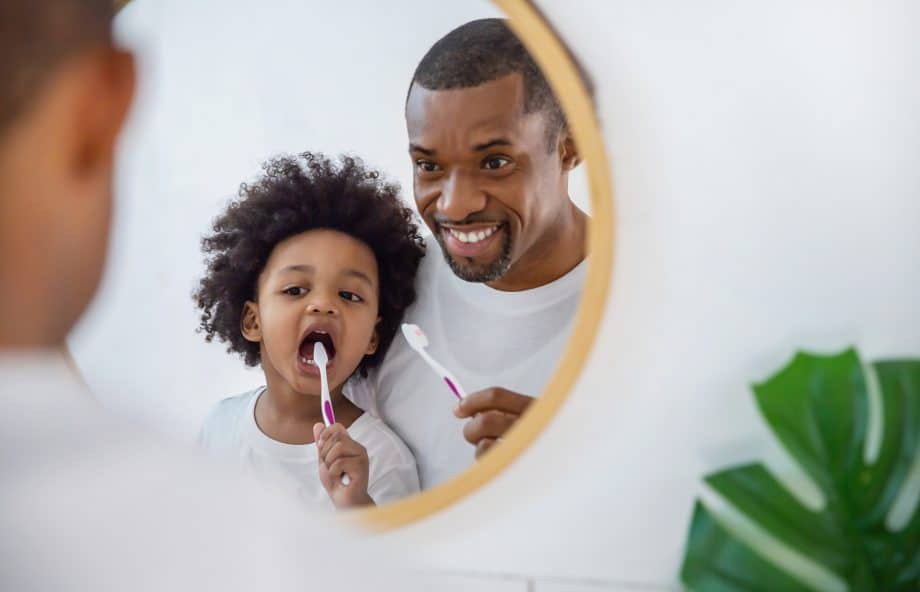Your baby’s first tooth usually appears when they’re around six months old, but it can happen closer to one year. The first teeth to erupt are usually the lower central incisors, often followed by the upper central incisors (the top front teeth).
The rest of your baby’s 20 primary teeth will appear between one and three years old—with the two-year molars coming in last.
Brushing, flossing, and regular dental check-ups are essential for keeping baby teeth healthy, but it can be hard to know how to take care of those tiny chompers. Here’s what you need to know about brushing your child’s baby teeth.
When to Start Brushing Baby Teeth
The American Dental Association recommends that you start caring for your child’s teeth and gums as soon as their first tooth erupts. Although it may seem unusual to brush a baby’s teeth, it’s critical to ensure that your infant's teeth remain healthy.
Baby teeth help children chew and speak properly. They also hold space in the jaw for permanent adult teeth to erupt. Although baby teeth will eventually fall out, they are significant to a child’s long-term health.
Many parents find it challenging to brush their baby’s teeth because of their small size and because infants often resist having people put things in their mouths. However, if you begin brushing your child’s teeth at an early age, they'll likely get used to the process and cooperate in the future.
How to Brush Baby Teeth
You can use a gauze pad, a soft cloth, or an age-appropriate toothbrush with soft bristles. If using a toothbrush, choose one with a small head to easily reach all surfaces of each tooth. You may need to change toothbrushes every few months because they wear down over time and lose their effectiveness.
When you first start brushing your child's teeth, you should use an amount somewhat smaller than the size of a pea. Opinions differ on whether fluoride or fluoride-free toothpaste is best for very young children.
Some experts assert that fluoride-free toothpaste is best for infants and toddlers under the age of two due to the risk of fluorosis, which can damage the enamel on emerging permanent teeth while they're still developing under the gums. Fluorosis causes white spots or stains on teeth that can't be removed by any dental treatment or procedure. Other experts claim that fluoride is important at any age to develop healthy permanent teeth.
Check with your pediatric dentist for their recommendation about the best type of toothpaste for your child's baby teeth.
Both types of toothpaste come in different flavors and colors, making them appealing to children.
At around 18 months old, you can increase the amount of toothpaste to the size of a pea and supervise your child while they brush. It's important that children spit out the toothpaste after brushing and don’t swallow it.
From the age of three, you can use a pea-sized amount of regular fluoridated family toothpaste, and from six years old, you can increase this to an entire strip across the brush.
How to Floss Baby Teeth
The Academy of General Dentistry recommends that parents start flossing their child's teeth as soon as two teeth are touching one another.
The best way to floss a baby's teeth is to use waxed floss or a pre-threaded flosser. Waxed floss will slide between the teeth more easily than unwaxed floss, so there is less risk of cutting the gums, which can hurt and cause bleeding.
A pre-threaded flosser has a thin piece of plastic with the floss threaded through it. The plastic protects the fingers and makes it easier to hold on to the floss, ensuring more effective cleaning.
Learn More About Caring for Your Child's Baby Teeth
By teaching your child to brush and floss correctly two times per day, they'll be off to a good start and decrease their risk of cavities later in life.
If you’d like to learn more about how we treat cavities in baby teeth, contact Dream Smiles today at 301-327-1003 .

